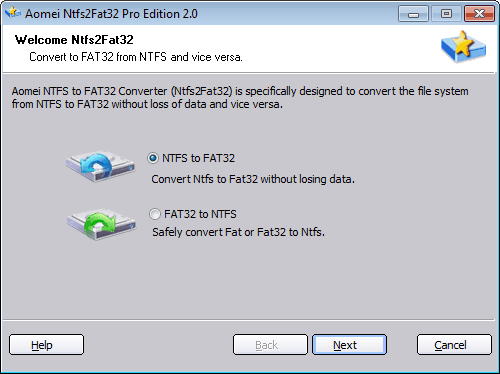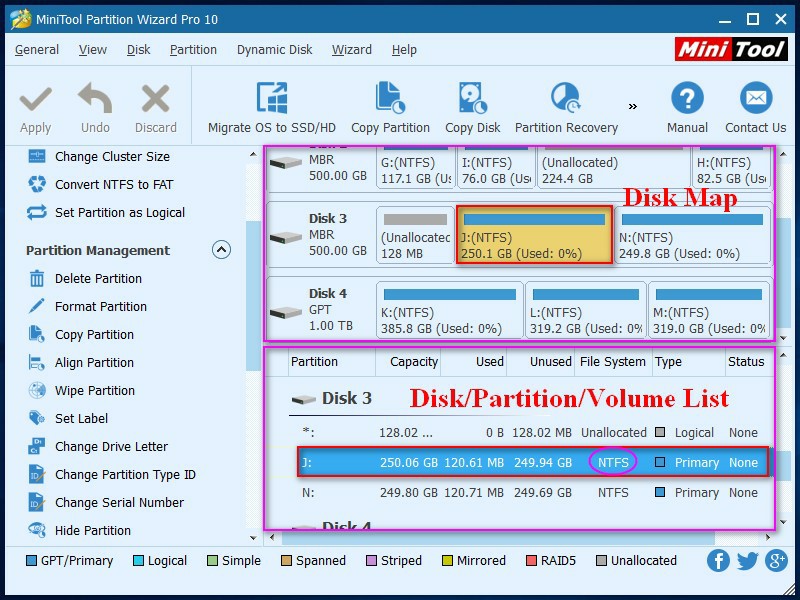Installation Windows Xp Ntfs Ou Fat

Or workaround to share, submit it to our tip contest and you could win a prize!When installing Windows XP from scratch, you are prompted to select from two different file systems: FAT32 and NTFS. However, it gives no real reason why you should select one or the other, and defaults to NTFS. Here are some things to consider when deciding between FAT32 and NTFS.FAT32If you're installing on a dual-boot system where you would have a FAT32 partition (default type for Windows 98 and SE for partitions over 2GB), you may run into problems depending on your situation. The FAT32 file system was created when the size of hard drives exceeded 2GB. The previous file system for DOS and Windows 95 was FAT16, which offered at most 2GB of allocation on your hard drive.
Windows Xp File System Structure
This of course is useless for today's hard drives when you can't find anything under 10GB anymore. Where FAT16 allowed a 2GB maximum, FAT32 only allows a 32GB maximum. If your hard drive is over 32GB, you'll have to split it into separate partitions, or use NTFS.NTFSNTFS was introduced with Windows NT. Among the reasons why it was introduced, it allowed partitions greater than what's even offered today, and boasts better performance and security. Focusing on security, it's possible that while an NTFS hard drive is secure when running Windows XP, there's no easy way to get back into the hard drive if you boot from an emergency floppy that only sees a FAT16 or FAT32 partition, such as what you'd get from a 98 or ME emergency floppy.The security in NTFS actually prevents you from circumventing its own file system from a boot floppy. This means that if for some reason your hard drive becomes unusable and you need to move data off of it, the task won't be as easy as it was when using Windows 95, 98, and ME.

The solution that the user has in this situation is to boot from the Windows XP CD and run a repair on the hard drive. This should fix any problems the user had with the system and bring it back to a bootable state.The other issue is in dual-boot situations. Running under NTFS, you can see FAT16 and FAT32 partitions, but if you boot back into Windows ME, you can't see the NTFS partition. This is a problem if you downloaded something to your XP partition and you want to move it to your ME partition while running under ME. Also, if you upgraded ME to XP and you convert your file system from FAT32 to NTFS, you cannot go back to Windows ME since ME can't run under NTFS. However, only NTFS allows you to set permissions on individual folders so that you can control who sees what.Converting from FAT32 to NTFS at a later timeIf you want, under Windows XP you can convert your FAT32 partition to NTFS using the following command from your Command Prompt:convert c: /fs:ntfsConclusionWith all this information, find what suits your needs and go with it.
If you're the kind of person that backs up regularly, go with NTFS. Same if you want to use a partition over 32GB without partitioning. Aib chemical control program example. If you want to play it safe, or if you want the ability to transfer files from one partition to another under a dual-boot situation, stick with FAT32.
Windows XP File System: NTFS By:One of the first choices you have to make when you install (or upgrade to) Windows XP is the file system. FAT(32) or NTFS.This is really an easy choice. There's only one reason not to choose NTFS; if you need to have an operating system which can't read NTFS (Win9x, MS-DOS etc.) to be able to access the partition. This limitation only applies to the local machine. If you want to access an NTFS drive across a network, any OS can access the NTFS partition.When installing Windows XP on a hard disk with a volume greater than 32GB, you must use NTFS. (Windows XP can read FAT32 formatted drives/volumes 32GB, but cannot create/format them as FAT32).People who work with large files (video/audio) will also need to use NTFS at a certain point: FAT32 supports a maximum (single) file size of 4GB, which is roughly 20 minutes of video.
NTFS doesn't have this restriction.NTFS?NTFS stands for New Technology File System. Microsoft created NTFS to compensate for the features it felt FAT ( File Allocation Table) was lacking. These features include increased fault tolerance and enhanced security.Windows XP's NTFS has several enhancements over Windows 2000 NFTS (but is compatible with it). Overall Microsoft managed to improve NTFS performance by 5 to 8 percent, making NFTS performance similar to FAT.
Also new in this version is the ability to do a quick-format during Windows XP setup. There are a number of other improvements, some of which I'll mention later in this article.Fault ToleranceNTFS repairs hard disk errors automatically without displaying an error message. When Windows XP writes a file to an NTFS partition, it keeps a copy of the file in memory. It then checks the file to make sure it matches the copy stored in memory.

If the copies don't match, Windows marks that section of the hard disk as bad and won't use it again (Cluster Remapping). Windows then uses the copy of the file stored in memory to rewrite the file to an alternate location on the hard disk.
If the error occurred during a read, NTFS returns a read error to the calling program, and the data is lost.SecurityNTFS has many security options. You can grant various permissions to directories and to individual files. These permissions protect files and directories locally and remotely.NTFS also includes the Encrypting File System (EFS).
EFS uses public key security to encrypt files on an NTFS volume, preventing unauthorized users from accessing those files. Encryption ensures that only the authorized users and designated recovery agents of that file or folder can access it.Users of EFS are issued a digital certificate with a public key and a private key pair.
EFS uses the key set for the user who is logged on to the local computer where the private key is stored. Users work with encrypted files and folders just as they do with any other files and folders.
Ntfs Windows 10
Encryption is transparent to any authorized users; the system decrypts the file or folder when the user opens it. When the file is saved, encryption is reapplied. However, intruders who try to access the encrypted files or folders receive an 'Access denied' message if they try to open, copy, move, or rename the encrypted file or folder.Note I: EFS is not available in Windows XP Home Edition.Note II: It is recommended that you encrypt at the folder level to ensure that new files are automatically encrypted and that temporary files created during the editing process remain encrypted. File CompressionAnother advantage to NTFS is native support for file compression. The NTFS compression offers you the opportunity to compress individual files and folders of your choice. Because compression is implemented within NTFS, any Windows-based program can read and write compressed files; there is no need to manually 'uncompress' the file(s) first.Note: The compression algorithms in NTFS support cluster sizes of up to 4KB. When the cluster size is greater than 4KB on an NTFS volume, none of the NTFS compression features are available.